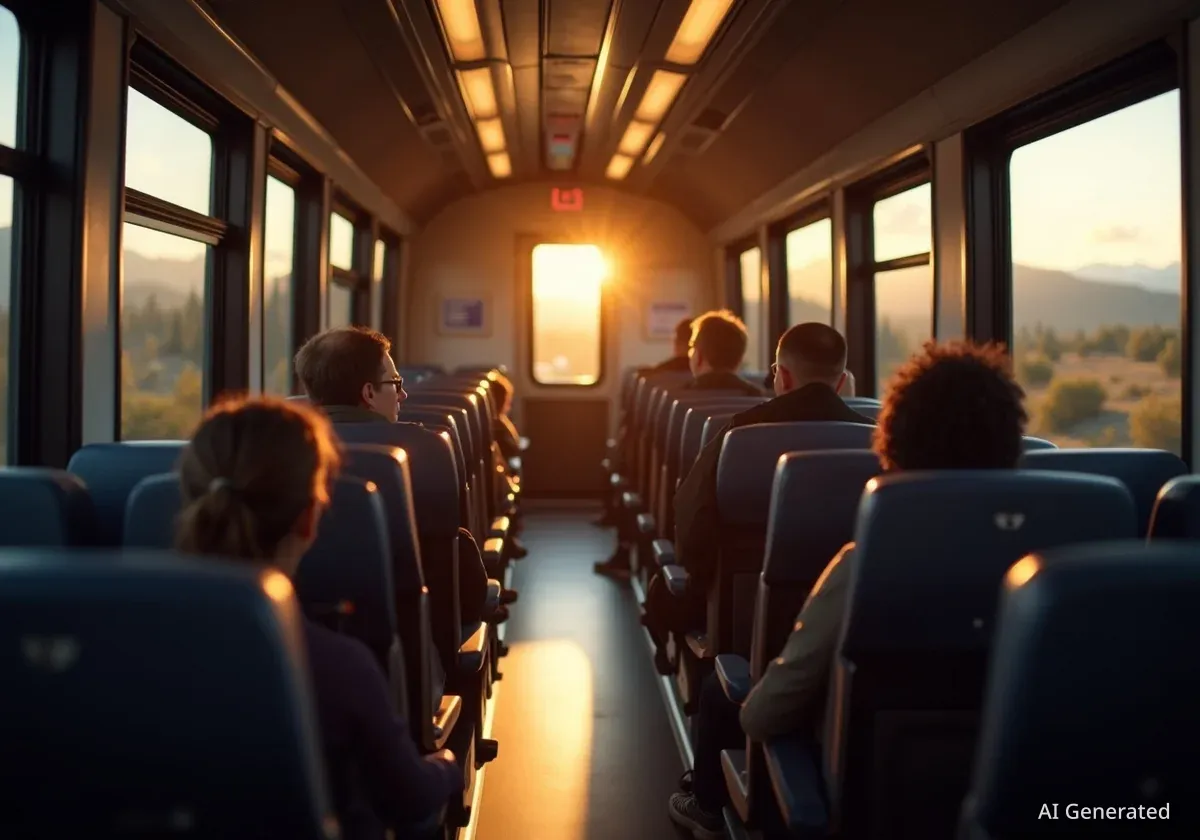An in-depth look at traveling over 4,500 miles on Amtrak trains reveals several surprising benefits and unique experiences. This extensive journey, covering 17 US states and two countries, highlights aspects of rail travel that often go unnoticed by those accustomed to flying.
One notable discovery is the absence of middle seats on Amtrak, ensuring a more comfortable ride for passengers. The experience also offers a distinct perspective on American life, passing through diverse landscapes and communities. Additionally, partnerships with organizations like the National Park Service enhance the travel experience with educational insights.
Key Takeaways
- Amtrak trains do not feature middle seats, offering more space.
- Train travel provides unique views of diverse American landscapes and daily life.
- The 'Trails and Rails' program offers educational commentary from National Park Service volunteers.
- Each train station presents a distinct architectural and historical experience.
- Interactions with fellow passengers can enhance the journey.
Comfort and Space on Board
A primary advantage of Amtrak travel is the seating arrangement. Unlike most airline configurations, Amtrak trains in coach class are designed with seats organized in pairs. This means no passenger will ever find themselves in a middle seat.
This layout provides increased comfort and personal space. When routes are not at full capacity, passengers often have an entire row to themselves. This adds a significant level of relaxation, especially on longer journeys.
Did You Know?
Amtrak's coach seating is always arranged in pairs, eliminating the middle seat. This design contrasts sharply with standard airline economy cabins.
Seeing America from the Ground
One of the most appealing aspects of train travel is the opportunity to observe the country from a different vantage point. Passengers can witness a continuous panorama of landscapes, from hazy sunsets over open fields to sharp mountain peaks and quiet lakeside towns.
Beyond natural beauty, train windows offer glimpses into daily life across various regions. Travelers see families walking their dogs, friends gathering at local establishments, and children waving at the passing trains. This provides a unique insight into the fabric of American communities, some of which might inspire future travel plans.
"I love seeing the country through the windows of an Amtrak train," one traveler noted. "It's a great way to see what life is like in other parts of the US."
Mapping the Journey
To maximize the experience, some travelers create a digital map before boarding. This map lists all scheduled station stops, allowing for route visualization. As the train moves, travelers can add notes or pins for interesting towns or scenic views they wish to revisit. This strategy helps document potential future destinations discovered along the way.
Travel Insights
Many experienced travelers prioritize flight-free options to explore regions more deeply. Rail travel allows for continuous observation of changing environments and local culture, which is often missed when flying over areas.
Unexpected Social Connections
While having a row to oneself is pleasant, sitting next to strangers can also be a rewarding part of the Amtrak experience. Some frequent travelers choose not to book private cabins precisely for the chance to meet other passengers. This unplanned interaction often leads to memorable encounters.
Initial interactions typically begin formally. However, as the journey progresses, conversations often deepen, leading to shared stories and even food. These connections can transform a simple trip into a social experience, adding a human element to the travel.
- Meeting new people: Opportunities to engage with fellow travelers.
- Sharing experiences: Passengers often exchange travel stories and personal anecdotes.
- Building rapport: Formal introductions can evolve into friendly exchanges over the journey.
Educational Journeys with National Parks
Amtrak maintains a unique partnership with the National Park Service through its 'Trails and Rails' program. On certain routes, this program brings volunteers from the National Park Service directly onto the train. These volunteers provide commentary and stories about the parks and significant landmarks as the train passes them.
During a recent journey from Washington, D.C., to Chicago, passengers enjoyed views of the New River Gorge National Park in West Virginia. A volunteer shared detailed information about the park and other points of interest. They also answered questions and shared personal stories, enriching the travel experience beyond just the scenery.
Program Details
The 'Trails and Rails' program enhances scenic routes by offering on-board educational commentary from National Park Service volunteers, connecting passengers with the natural and cultural history of the regions they traverse.
Unique Train Station Experiences
Each Amtrak station offers a distinct architectural and historical character. From grand, modern halls to historic, intricately designed structures, the stations themselves are part of the travel experience. For example, Moynihan Train Hall in New York City is known for its expansive skylights, which cast dynamic patterns on the floor.
In contrast, Newark Penn Station in New Jersey showcases Art Deco architecture. Its waiting hall features globe chandeliers and detailed metalwork, transporting visitors back in time. These diverse station environments contribute to the overall richness of rail travel across the country.
Regardless of the specific station or train, traveling with Amtrak provides a comprehensive way to explore the United States. It offers comfort, unique views, social engagement, and educational opportunities, making it a compelling alternative to other forms of transport.
Station Highlights
- Moynihan Train Hall, New York City: Noted for its modern design and impressive skylights.
- Newark Penn Station, New Jersey: Celebrated for its Art Deco details and historical ambiance.
- Other historic stations: Many stations across the network feature unique architectural styles and local history.
These elements combine to create a travel experience that goes beyond simple transportation. It becomes a journey of discovery, offering new perspectives on the country and its people.





